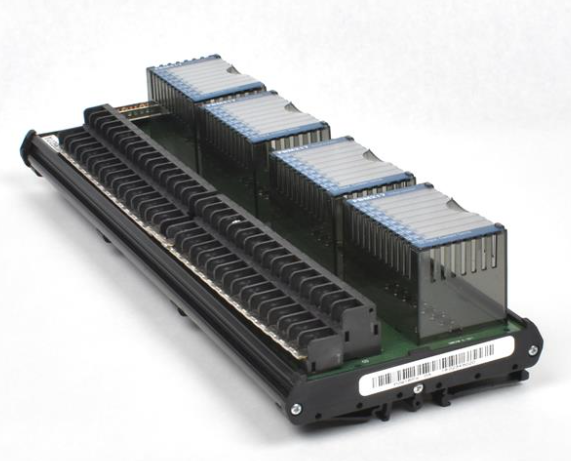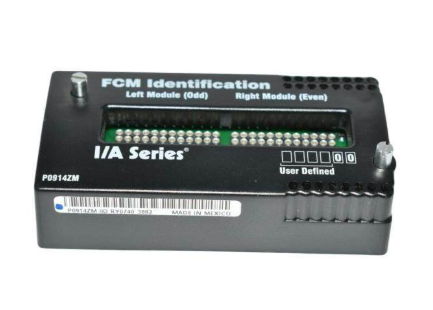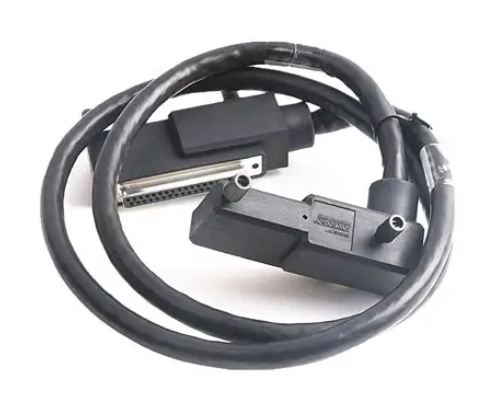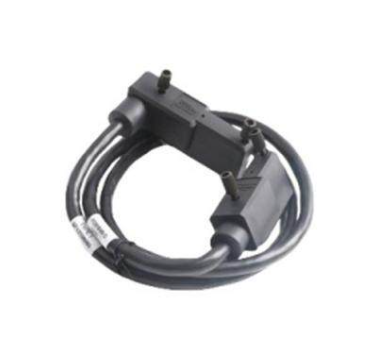The trend of the two-wheeler industry is upward and the structure is better
1. The two-wheeler industry chain belongs to the manufacturing industry, and the products have certain mandatory consumption attributes
From the perspective of the industrial chain, the upstream of the two-wheeler industry includes bulk raw materials (aluminum, rare earth, copper, rubber, etc.) and parts (batteries, motors, frames, tires, wiring harnesses, etc.), and the downstream is the dealer. Two-wheeled vehicle companies are mainly responsible for product design, development and production, brand marketing, core parts technology and other fields, with a certain capital intensive attributes, more sensitive to scale effects. Compared with automobiles, two-wheeled vehicles have a high cost-effective advantage, which is generally accepted by domestic consumers, and the annual sales of the domestic market in 2021 are far more than the sales of the automobile industry. As a transportation tool, the typical demand of two-wheeled vehicles is to commute to work, pick up children, buy food and other needs, as well as takeout, express delivery and other emerging consumer scenarios of high-frequency use needs, with a certain must choose consumer goods attributes.
The proportion of raw materials in cost is high, and there is a gradual downward trend. According to the prospectus of Emma Technology, the proportion of direct materials for electric bicycles and electric motorcycles in the cost in 2021 is 93.68% and 96.67% respectively. Battery, motor, controller as the core components of electric two-wheeled vehicles, by lead, copper, rare earth (sintered Ndfeb) and other raw material price changes are greatly affected. Raw material prices after the cycle of upward, there is a gradual downward trend.
Midstream parts to motor, battery as the core. According to the announcement of Emma Technology, the purchase amount of batteries and motors accounted for more than 35% of the main raw material purchases. Two-wheeled vehicle batteries are still the mainstream of lead acid, according to the Huajing Industrial Research Institute, in 2021 lead-acid batteries accounted for 76.6%, lithium battery market share continues to expand, accounting for 23.4% in 2021. In addition, sodium batteries have greater development potential because of their cost, energy density and other advantages.

The downstream two-wheeler industry has a high concentration. From the point of view of models, two-wheeled vehicles can be divided into treadplate, curved beam, straddle; From the point of view of power type, it can be divided into electric two-wheelers and fuel motorcycles. In terms of electric two-wheelers, Yadi Holding and Emma Technology present a two-strong separation pattern, and the concentration is still improving, and the electric two-wheelers CR2 exceeds 40% in 2021. In terms of fuel motorcycles, Da Changjiang Group has a leading share, with a market share of 15% in 2021.
2. Historical review: three stages of industry development
2.1. Historical recovery: Two-wheeled vehicles have entered a new stage of development
From 2000 to 2006, the industry was in the process of rapid development, and the domestic two-wheeled vehicle production (including two-wheeled motorcycles and electric bicycles) increased from 11.42 million to 40.53 million, with a CAGR of 23.51%; From 2007 to 2018, a number of cities intensively issued the ban and limit policies, and the growth of the industry slowed down, and the output of two-wheeled vehicles (including two-wheeled motorcycles and electric bicycles) increased from 45.61 million to 46.64 million, with a CAGR of only 0.2%; Since 2019, with the implementation of the new national standard, the industry has introduced a number of mandatory standards, and under the strict 3C certification and electric motorcycle production qualification, the replacement demand for the stock of electric two-wheeled vehicles has been driven, forming a pattern of industry share concentration to the leading.
2.2. 2000-2006: Rapid development period
According to China Automobile Association and China Auto Association, the domestic two-wheeled vehicle production (including two-wheeled motorcycles and electric bicycles) increased from 11.42 million to 40.53 million from 2000 to 2006, with a CAGR of 23.51%, and the industry developed rapidly. Among them, from 2000 to 2006, the total output of domestic two-wheeled motorcycles increased from 11.13 million to 21.03 million, CAGR of 11.2%; The total production of electric bicycles from 290,000 to 19.5 million, CAGR of 101.65%, electric bicycles are growing rapidly.
2.3. 2007-2018: The period of tightening regulations
After 2007, a number of cities intensively issued a ban on motorcycle, motorcycle restriction policy, strict laws and regulations, the industry growth rate decreased significantly. According to the data of China Automobile Association and China Auto Association, the production of two-wheeled vehicles (including two-wheeled motorcycles and electric bicycles) increased from 45.61 million to 46.64 million in 2010-2018, with a CAGR of only 0.2%. Among them, the production of two-wheeled motorcycles dropped from 24.23 million to 13.86 million, a decrease of -42.78%, and the two-wheeled motorcycle industry has a significant decline. At the same time, due to the obvious substitution effect of electric bicycles, they benefited from the strict ban on motorcycle policies, and their output rose from 21.38 million to 32.78 million from 2007 to 2018, an increase of 53.32%.

2.4. 2019 to present: Policy promotion period
Policy-driven replacement demand is conducive to the concentration of the industry to the leader. In 2019, the "Electric Bicycle Safety Technical Regulations", that is, the "new National Standard", was officially implemented, and the document clearly defined the indicators such as the vehicle quality, vehicle size, and maximum time speed of the electric bicycle, and the nature of the indicators were mandatory indicators. On the supply side, the new national standard will change the certification method of electric bicycles from industrial product production license management to CCC certification (that is, mandatory product certification), and the complex 3C certification has raised the industry access threshold. After the original luxury electric bicycles exceeding the standard are classified as electric light motorcycles or electric motorcycles, enterprises are required to have electric motorcycle production qualifications. 3C certification and electric motorcycle production qualification, accelerate the production capacity of small factories that do not meet the standards, making the industry concentrated to the leading, according to Sullivan research, 2021 electric two-wheeler CR2 reached 46.4%. On the demand side, the new national standard has clear requirements for the license and driving qualification of electric light motorcycle and electric motorcycle, and a number of regions have introduced the cut-off time of the transition period, and the two-wheeled vehicles without 3C certification and exceeding the standard can not be on the road and licensed, driving the replacement demand for stock cars. In addition, the "one car, one vote" system in the "Methods for the Use of Motor vehicle invoices" implemented in 21 years has standardized the two-wheeled vehicle sales lines, making the cost of non-standard small factories rise, which is conducive to the concentration of the industry to the leader. Therefore, we believe that industry policies drive replacement demand, and the industry share continues to concentrate on the leader.
3. Analysis of driving factors for two-wheelers: income level, urbanization, growth of export-supported industries
With the increasing income level of residents, urbanization rate and transportation costs, people's travel demand has gradually increased, and electric two-wheelers have a high cost performance, which is more common in short-distance travel, and the number of domestic two-wheelers has steadily increased. According to the data of the China Cycling Association, from 2013 to 2021, the number of electric two-wheelers in China increased from 132 to 241, with a CAGR of 8.92%. In addition, drawing on the experience of domestic development, with the process of industry leaders going to sea, the export market can be expected in the future, and the internal and external needs of two-wheel drive, we believe that the two-wheel vehicle industry is expected to have a high boom.
3.1. The increase in per capita income level supports the demand for two-wheelers
From 2000 to 2006, the per capita income of urban households increased from 60,300 yuan to 11,800 yuan, with a CAGR of 11.02%, and the per capita income maintained a rapid growth. Superposition the total domestic population has increased steadily, and consumer groups provide a solid foundation for the development of the industry.
3.2. The improvement of urbanization level leads to the increase of two-wheeled vehicle usage scenarios
From 2000 to 2006, China's urbanization rate increased from 36.22% to 44.34%. The increasing urbanization rate expands the radius of cities and increases people's commuting time and traffic demand. At the same time, the annual transportation and communication expenditure per capita in urban areas increased from 426.95 yuan to 1147.12 yuan, with a CAGR of 17.91%. The urbanization level and transportation cost increased, and the commuting demand increased. Two-wheeled vehicles have relatively low acquisition costs and use costs, and the cost performance is convex, especially in short distance traffic is more common. Taking electric two-wheelers as an example, according to Sullivan's research, 43.20% of users in electric two-wheelers with a commuting distance of 5-10 kilometers in 2020.

3.3. The future space of two-wheeler export is promising
3.3.1. The proportion of electric two-wheeler exports is still small, and it is expected to be exported to developing countries
According to Sullivan data, in 2020, China's electric bicycle shipments reached 30.2 million, and the export volume of electric bicycles reached 1.5678 million, accounting for only 5.22%, and there is still much room for improvement. At present, some countries in Southeast Asia have introduced a ban on motorcycle policies, and a number of developing countries or regions have also introduced an incentive policy for electric two-wheeled vehicles. Drawing on the domestic electrification replacement process, taking into account the geographical environment and economic growth trend of some developing countries, the export of electric two-wheelers has broad space and is expected to become the future profit growth point of the industry. Among them, Yadi has set up a factory in Vietnam and officially put into production in 2019, with an annual planned capacity of 1.2 million vehicles.
3.3.2. Fuel motorcycle exports are expected to usher in a broad space and upward profitability
Fuel motorcycle exports accounted for a high proportion, small displacement accounted for the absolute majority. With the introduction of the ban and restriction policies across the country, industry sales continued to decline, and the proportion of exports gradually increased, supporting the development of the motorcycle industry, and the export volume of motorcycles accounted for 44% in 2021, and the foreign income of many motorcycle companies accounted for nearly 50%. According to the Motorcycle Chamber of Commerce, in the export sales of two-wheel fuel motorcycles in China from January to August 2022, small-displacement motorcycles of 250cc and below accounted for 95%, and small-displacement motorcycles accounted for the absolute majority.
The two-wheeler market in developing countries has a high shipment volume and a good user base. In the global two-wheeler market shipment share, Asia Pacific (China, Japan), South Asia (India, Pakistan, Bangladesh, Nepal), ASEAN, South America ranked the top four. According to Frost and Sullivan, in 2021, the shipments of two-wheelers in Asia-Pacific, South Asia, ASEAN and South America accounted for 33.33%, 32.18%, 21.39% and 6.55%, respectively, and the two-wheelers in developing countries have a considerable market. Drawing on the domestic development experience, the growth of income has helped the export demand of motorcycles to increase and the profitability to rise. In developing countries such as South America and Africa, the economic development is relatively backward and the infrastructure construction is poor, and motorcycles have certain advantages because of their flexibility and convenience and low cost. Drawing on domestic development experience, we believe that per capita income growth in developing countries will boost motorcycle demand. In the context of the current export of small displacement, consumption upgrading is expected to drive the profit of the fuel motorcycle industry, and exports are expected to continue to help the development of the industry.

4. Electric two-wheeler industry outlook: The electric two-wheeler industry will increase steadily in 2022-2025
4.1. Market size: Sales volume is expected to maintain a compound growth of 8.37% from 2022 to 2025
Taking into account the domestic shared electric bicycle delivery, takeout, express delivery and other new consumption scenario vehicles, as well as the demand for natural car replacement, the demand for car replacement under the new national standard policy, exports and other factors, in the case of gradually fading the impact of the epidemic and falling raw material prices, we are expected to maintain 8.37% compound growth of electric two-wheeled vehicle sales in 2022-2025. Sales of electric two-wheelers reached 5325, 5763, 62.7 and 67.78 million units respectively. From the perspective of sales structure, according to the data of China Automobile Association and Frost & Sullivan, the total shipments of domestic electric motorcycles and electric light motorcycles in 2021 accounted for 6.38%. We assume that the total shipment volume of electric motorcycles and electric light motorcycles will gradually increase to 9% in 2022-2025. Based on this, we estimate that the sales of electric bicycles in 2022-2025 will reach 4952, 5325, 57.56 and 61.82 million, respectively, and the total sales of electric motorcycles and electric mopeds will reach 373, 438, 514 and 5.96 million. Among them, the sales of electric motorcycles were 205, 241, 2.83 and 3.28 million, and the sales of electric mopeds were 168, 197, 231 and 2.68 million, respectively. After considering the price of various bicycles, we estimate that the 2022-2025 electric two-wheeler market size will reach 123.7, 1418, 1636 and 184.6 billion yuan respectively.
4.2. New consumption scenarios help the industry development
Demand for immediate delivery drives industry growth. China's food delivery market has maintained rapid development, and the monthly active users of Meituan food reached 56.98 million in December 2020. According to the 2021 Corporate Social Responsibility report of Meituan, 5.27 million takeout riders received income in Meituan that year, and electric two-wheelers, as a highly dependent means of transportation in the takeout industry, expanded industry demand with the increase in the number of takeout riders. At the same time, the rapid development of express business also puts forward higher requirements for distribution capacity, and electric two-wheelers have the advantages of mobility and flexibility, high cost performance and other advantages, becoming the first choice for instant distribution vehicles, instant distribution scenarios with high vehicle intensity, short depreciation period, and increasing industry demand. The demand for shared motorcycles has steadily increased. From the demand side, compared with shared bicycles, electric bicycles can better meet people's short and medium distance travel needs. From the supply side, sharing electric bicycles due to stronger profitability, major companies increase the market release of shared electric bicycles. According to IIMedia Consulting, in 2021, the number of domestic shared electric bicycles will reach 3.82 million, considering the increase of major companies, we expect that the scale of domestic shared electric bicycles will increase from 4.95 million units to 7.92 million units in 2021-2025, with a CAGR of 20%.
4.3. High appearance level design appeals to younger groups
According to the "White Paper on the intelligence of electric two-wheelers", the passenger base of electric two-wheelers is younger, of which the proportion of users aged 26-30 is up to 32%, and the proportion of female users is slightly as high as 54%. We believe that the high appearance level and young design of electric two-wheelers is conducive to continuing to broaden the target customer groups such as young and female, and better support the development of the industry.

4.4. The intelligent trend drives up the industry's product strength and profitability
Under the trend of intelligent electric two-wheelers, the intelligent function of the products of various manufacturers continues to iterate, pushing the product force to continue to rise, changing the inherent cognition of the relatively low-end electric two-wheelers, thus opening up the market space and achieving the same increase in volume and price. Among them, the whole series of products of No. 9 company are equipped with a number of intelligent functions, which is outstanding in many manufacturers. In addition, Emma Engine MAX series, Yadi Crown series, calf's multi-series products, and the sodium battery two-wheeled vehicles launched by each family in the future will jointly promote the industry's product power and profitability.
4.5. Industry concentration is expected to continue to increase
Under the trend of stricter policies and upward product force, industry concentration continues to increase, and CR2 from 22% to 46% in 2017-2021, we believe that leading enterprises will benefit from the increase in industry concentration. Learn from the air conditioning industry, which has both manufacturing and consumption attributes and is also a durable consumer goods, similar to the situation of the air conditioning industry around 2012, the CR2 of the industry has reached 40%-50%, and the CR2 of the industry has gradually increased since 2012.
- EMERSON
- Honeywell
- CTI
- Rolls-Royce
- General Electric
- Woodward
- Yaskawa
- xYCOM
- Motorola
- Siemens
- Rockwell
- ABB
- B&R
- HIMA
- Construction site
- electricity
- Automobile market
- PLC
- DCS
- Motor drivers
- VSD
- Implications
- cement
- CO2
- CEM
- methane
- Artificial intelligence
- Titanic
- Solar energy
- Hydrogen fuel cell
- Hydrogen and fuel cells
- Hydrogen and oxygen fuel cells
- tyre
- Chemical fiber
- dynamo
- corpuscle
- Pulp and paper
- printing
- fossil
- FANUC
- Food and beverage
- Life science
- Sewage treatment
- Personal care
- electricity
- boats
- infrastructure
- Automobile industry
- metallurgy
- Nuclear power generation
- Geothermal power generation
- Water and wastewater
- Infrastructure construction
- Mine hazard
- steel
- papermaking
- Natural gas industry
- Infrastructure construction
- Power and energy
- Rubber and plastic
- Renewable energy
- pharmacy
- mining
- Plastic industry
- Schneider
- Kongsberg
- NI
- Wind energy
- International petroleum
- International new energy network
- gas
- WATLOW
- ProSoft
- SEW
- wind
- ADVANCED
- Reliance
- YOKOGAWA
- TRICONEX
- FOXBORO
- METSO
- MAN
- Advantest
- ADVANCED
- ALSTOM
- Control Wave
- AB
- AMAT
- STUDER
- KONGSBERG
- MOTOROLA
- DANAHER MOTION
- Bently
- Galil
- EATON
- MOLEX
- Triconex
- DEIF
- B&W
- ZYGO
- Aerotech
- DANFOSS
- KOLLMORGEN
- Beijer
- Endress+Hauser
- MOOG
- KB
- Moxa
- Rexroth
- YAMAHA
- Johnson
- Westinghouse
- WAGO
- TOSHIBA
- TEKTRONIX


Email:wang@kongjiangauto.com



































































































































